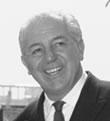EMBARGOED UNTIL 7.15 P. M. 15TH ILOVEMBER, 1966
NATIONAL BROADCAST NO.
3Y THE PRIME MINISTER, MR. HAROLD HOLT
Education is important to every Australian and
vital to the nation. Under the Federal Constitution education
is listed as a responsibility of the States, but, a share
of responsibility has been t'aken by a number of authorities
and each has its part to play.
In recent years the Commonwealth jovernment has
come into the picture in a more direct fashion. It has,
for a much longer time, helped the States by the growing
size of the -eneral grants made from Commonwealth revenues.
These are male available to the States each year, without
any strings attached. They are the largest source of
State revenue. In the last Budget introduced by a Labor Jovernment,
the . rant was 141 million. Last year it was ; 757 millions,
and This year it will be ' 817 millions. A factor in
determining the size of the grant to each State is the
growth in that State's population. Since most of the
population increase consists of children, the States
automatically gain more finance each year for education.
The States have substantially increased their
own expenditure on education. This has risen from
.92 millions in 1950-51 to .: 594 millions in 1965-66
more than a six-fold increase.
Education is the biggest item in the Budget of
any State, and accounts for approximately one-third of
that State's expenditure.
But the Commonwealth in addition to providing
increasing general revenue for the States, has greatly
increased its own expenditure on specific forms of
education. In 1960-61, we soent "' 49.7 millions. Last year
this had grown to -125.2 millions. This year it will be
':, 155.8 millions. Included in this total are grants to the States
for universities which take un about one-third of the
total. Nearly -20 millions will go to the Australian
National University and more than .25 millions for
assistance to Australian students, mainly through
Commonwealth Scholarships. The remainder is made up
with such items as grants for technical schools, grants
for science facilities, research projects, colleges of
advanced education and international aid, which enable
many students from overseas to have the benefit of
education in Australia.
WThen we came into office there were 30,000 stadents
at our universities and university colleges. Today there
are 92,000 the number has trebled in seventeen years
-2-
while the population has increased by less than half.
In our first year, full-time teachin and research staff
at the universities was 1,296 one or every t;, enty-four
students. Today there are 5.600 or one for every
sixteen students. Ours the first Government to
introduce special tax allowances to parents for education
expenses. This impressive record is surely proof of our
sincere desire to do what we can in this field.
jie now -vropose further assistance to education.
Here are some highlights
8 million a year over the next three
financial years for the construction mand
equipment of new colleges for teacher
training throughout Australia. At least
ten per cent of the places at these
colleges are to be reserved for teachers not
bonded to State Education Departments.
intend to double the amount available to
independent schools for science laboratories.
So important has the Commonwealth's provision for
education become and so highly do we desire an education
system adequate lor the strenth and welfare of the nation,
that we will establish for the first time in Federal
history, a Commonwealth Ministry of Education and Science.
( This talk will be broadcast by the A. J. C.
inter-state network at 7.15 Tuesday,
November, 1966)

